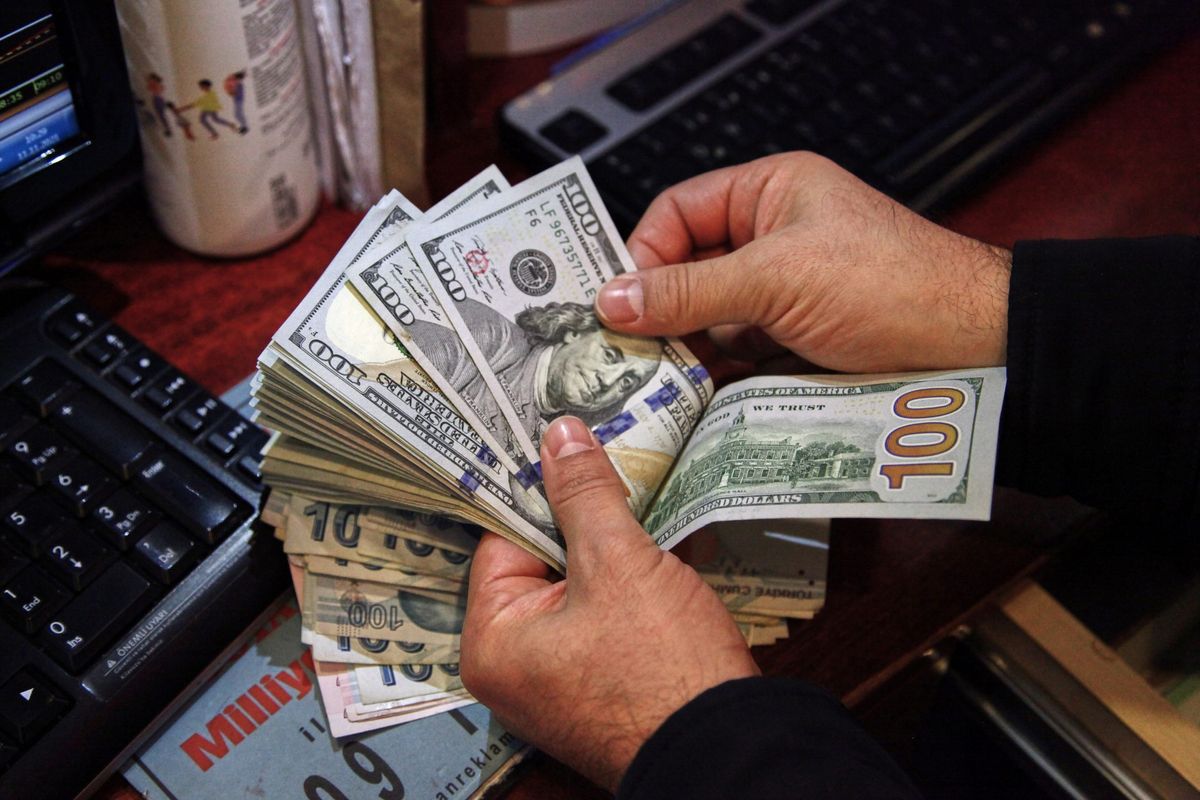This is why everyone’s talking about inflation again

A few minutes every morning is all you need.
Stay up to date on the world's Headlines and Human Stories. It's fun, it's factual, it's fluff-free.
Well, in theory, yes. But, this then takes us to another problem on the business side. Businesses are having a tough time meeting this higher demand from consumers, putting more strain on prices and upward pressure on inflation.
What’s inflation?
- Inflation is when the overall prices of goods in an economy get more expensive.
- When the price of things goes up, that means a currency’s purchasing power goes down, and so unless you’re getting a raise matching the increase of inflation, your salary that may have looked great a few years ago no longer takes you as far.
- Right now, the United States is dealing with high inflation to the tune of 6.2% in October. Just for some context, though, this is the fastest 12-month pace since 1990 and the fifth consecutive month that the US economy has seen inflation above 5%.
- While there are several contributing factors to this spike in the prices of our goods, there’s still one big event we can point to as the cause of all of this: the pandemic.
How did the pandemic start all of this?
- The pandemic was pretty unpredictable in many ways, and consumer spending habits were one area people had a hard time predicting what consumers would do and how long behaviors would last.
- According to Scott Pederson, founder of Harmony Wealth Management LLC, “companies cut down or stopped productions of goods with the thought that there would be less demand due to the economic slowdown caused by the pandemic.”
- “However,” he said, “the unprecedented fiscal and monetary policy support of government and central banks around the world provided liquidity into the economic system to keep consumers afloat, especially in the US.”
- He explained that the “use of stimulus payments, enhanced unemployment benefits, and a moratorium on foreclosure and evictions led to households in many cases having more income during the pandemic than they did working.”
- With the services industry closed, such as restaurants, consumers directed their additional income and savings into buying goods instead.
- “This increase in demand from the US, a consumption economy, along with a lack of inventory leads to a lack of supply and higher demand which leads to higher prices [and] inflation.
So we can just increase the supply of goods, right?
- Well, in theory, yes. But, this then takes us to another problem on the business side. Businesses are having a tough time meeting this higher demand from consumers, putting more strain on prices and upward pressure on inflation.
- You see, in order to sell a good, that good needs to be made and then delivered, right? Right now, getting both the goods manufactured as well as sent to shops and warehouses is difficult.
- For example, Vietnam, which has become an apparel manufacturing hub over the last few years, is dealing with a worker shortage after many workers left to go back to their hometowns to recover from the emotional toll from being in the city during the height of the COVID-19 outbreaks. This means that these manufacturing firms are limited on how much they can make.
- Within the US, though, there’s also a worker shortage. This means that there are fewer people to, for example, unload ships at cargo ports and fewer truck drivers able to take that cargo to where it needs to go.
- So, right now, not only are there more Americans with increased savings wanting to spend, but there’s fewer goods to spend on. And, businesses and consumers alike, feel that pressure through the increased prices of goods.
Are those all the main reasons?
- Broadly, yes. But, there’s recently been another reason mentioned that not everyone agrees on.
- According to former US Labor Secretary Robert Reich, “there’s a deeper structural reason for inflation, one that appears to be growing worse: the economic concentration of the American economy in the hands of a relative few corporate giants with the power to raise prices.”
- Reich argues that lots of industries have become more concentrated among fewer companies. Because of this, there’s less pricing competition within industries, meaning that the companies are raising prices for the consumer to better their bottom line.
- But Pederson said he disagrees with Reich, saying that, “Industries have become more concentrated over the last decades but until the recent uptick in inflation due to the covid pandemic, inflation has been stuck at around 2% since the Great Financial Crisis.”
- And according to Lenny Liebmann, founding partner of Morgan Armstrong, a New Jersey-based strategic advising firm, he thinks it’s a little broader than Reich is giving it credit for.
- “The fact is that, ultimately, the company selling the product or service decides pricing based on their targets for profitability,” he said. “And, in the case of stock corporations (public or private), those profitability targets are driven by the demands of investors – who will simply take their capital elsewhere if they don’t get the returns they demand.”
So, Are there other, smaller reasons?
- According to Pederson, “One factor would be the impact of the base effect on inflation.”
- Inflation is projected year-over-year, meaning that, for example, the inflation rate for October of 2021 is based on how much prices have risen from October 2020.
- But during 2020, inflation actually stayed pretty low, meaning that even if inflation is high now, it looks higher than it actually is because the number it’s based on is actually low.
- Another factor is inflation expectations among consumers, which isn’t as easy to quantify.
- When stories about inflation start making headlines (which, in fairness, we’re doing right now), people generally worry and fear that it’ll get worse later, so they buy more, to try and make the most of the relatively lower prices now.
- And it’s a self-fulfilling prophecy because when this demand increases, especially during a shortage of goods, there’s even more upward pressure on inflation.
What’s next?
- No one really knows for certain what the Federal Reserve will do next, but they are working on beginning Fed tapering, which is essentially a process where the Fed slowly reduces the amount of cash flow and stimulus into the economy. It also means eventual monetary tightening, i.e., increasing interest rates.
- But the inflation data has caused a lot of mixed opinions. Treasury Secretary Janet Yellen has said that in order to ease inflation, the US needs to control COVID-19. But, she has also repeatedly said that she expects inflation to decline by the second half of next year.
- “When labor supply normalizes and the pattern of demand normalizes, I would expect that, if we’re successful with the pandemic, to be sometime in the second half of next year, I would expect prices to go back to normal,” Yellen said on CBS’s “Face the Nation” on Sunday.
- Morgan Stanley’s economists are predicting that the Fed won’t raise interest rates until 2023, but the firm’s chief executive officer James Gorman expects it to be sooner.
- Neel Kashkari, the president of the Federal Reserve Bank of Minneapolis, doesn’t think the Fed should overreact because he believes that the high inflation right now is temporary.
- But according to Dr. Tenpao Lee, a former professor of economics at Niagara University in New York, tapering isn’t going to be very effective in taming inflation “because the broken supply chain is the major factor,” and tapering solves a demand problem more than a supply problem.
You drive the stories at TMS. DM us which headline you want us to explain, or email us.




Comments ()